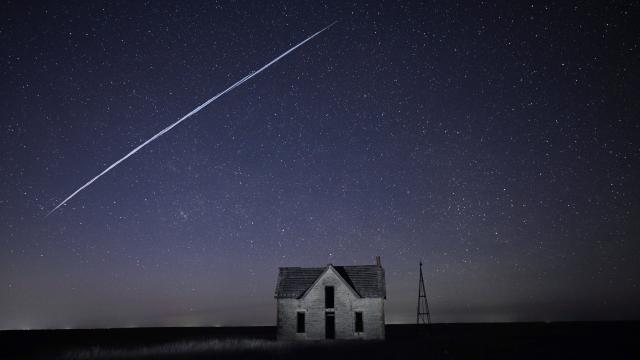A new centre established by the International Astronomical Union is seeking to protect the interests of astronomers as the number of satellites in Earth orbit continues to climb.
The Centre for the Protection of the Dark and Quiet Sky from Satellite Constellation Interference, announced February 2, will be hosted by the National Optical-Infrared Astronomy Research Laboratory (NOIRLab) and the Square Kilometre Array Organisation (SKAO). NOIRLab will concern itself with optical astronomy, while SKAO will look into issues related to radio astronomy.
“The new Centre is an important step towards ensuring that technological advances do not inadvertently impede our study and enjoyment of the sky,” Debra Elmegreen, the president of IAU, said in a statement. “I am confident that the Centre co-hosts can facilitate global coordination and bring together the necessary expertise from many sectors for this vital effort.”
The Centre will encourage satellite providers to minimise light pollution and other forms of astronomical interference, encourage governments and state officials to better regulate this blooming industry, and support the global community of astronomers who are now having to deal with problems caused satellite interference.
Jessica West, a senior researcher on space security at Project Ploughshares, a Canadian peace and security research institute, said we’re reaching the point where our ability to observe space is being significantly harmed.
“This is a big problem,” she wrote to me in an email. “Astronomy is key to our exploration and use of space, deep space navigation, planetary defence from asteroids, and our knowledge of the Earth, Solar System, and Universe. And watching the night sky is core to who we are as humans. Losing that is a loss for every single person around the world.”
“It is so decided” thus begins the 59th Session of the UN #COPUOS Science and Technical Subcommittee with adding a new agenda item on Dark and Quiet Skies! The first time ever an astronomy topic makes it formally on the agenda of the UN Space committee. pic.twitter.com/viIa6BArRy
— Andy Williams (@Andy4Science) February 7, 2022
The cost of launching rockets and building satellites has never been lower. This is resulting in a mad rush to claim prime real estate in Earth orbit, as it now represents a viable place to do business. The private sector’s use of large fleets of interconnected satellites to provide broadband internet to paying customers is currently the most dominant example. Elon Musk has taken an early lead in this race for space, as SpaceX has now launched more than 2,000 Starlink satellites, with plans to launch at least 2,400 more. London-based OneWeb has launched hundreds of similar satellites, while Jeff Bezos’s Project Kuiper and the European Union intend to do the same.
The problem with so many satellites up there is that they’re messing with optical and radio observations. Long exposures at optical wavelengths are particularly affected; research from last month found a dramatic increase in the number of images taken during the twilight hours that contained streaks caused by Starlink satellites. That’s a problem for astronomy, but also for our security; views of the horizon at dusk and dawn are critical for detecting threatening near-Earth objects. At the same time, radio interference produced by satellite data downlinks could make it difficult to study the cosmic microwave background, for example.
Hence this coordinated response from astronomers. The IAU is positioning the new Centre as the “the leading voice for astronomical matters that relate to the protection of the dark and quiet sky from satellite constellations and to act as a hub of information and resources to which any stakeholder group will be able to contribute and from which they can draw in support of their own activities.”
Accordingly, the group will call upon astronomers, satellite operators, government regulators, and the wider community to get involved. Satellite companies will be asked to provide more information about their space-based assets, such as coordinates and predicted movements. The group will also help astronomers to deal with associated problems, like providing software to remove visual artifacts from telescope images. The Centre will also encourage an open forum to discuss voluntary measures, such as reducing the reflectivity of satellites and for satellite companies to use higher, less obtrusive orbits.
West agrees that solutions exist.
“It’s a not a question of satellites versus astronomy, but rather how to mediate the different needs and interests and values that coalesce in outer space, including those that are less powerful,” she explained. “This requires open dialogue and coordinated and collective action. The international astronomy community is showing us how to do this. And the world is listening. This is a critical moment for space governance.”
This is a good and necessary starting point. Astronomers and regulators are currently behind in this struggle for space, if that’s a fair way to describe it, with satellite operators, for the most part, currently setting the rules. And by rules, I mean no rules — hence the problem. The IAU’s new Centre has very good intentions. Let’s hope the relevant stakeholders are listening and willing to respond.
More: Elon Musk’s Starlink Is Causing More Streaks to Appear in Space Images.
